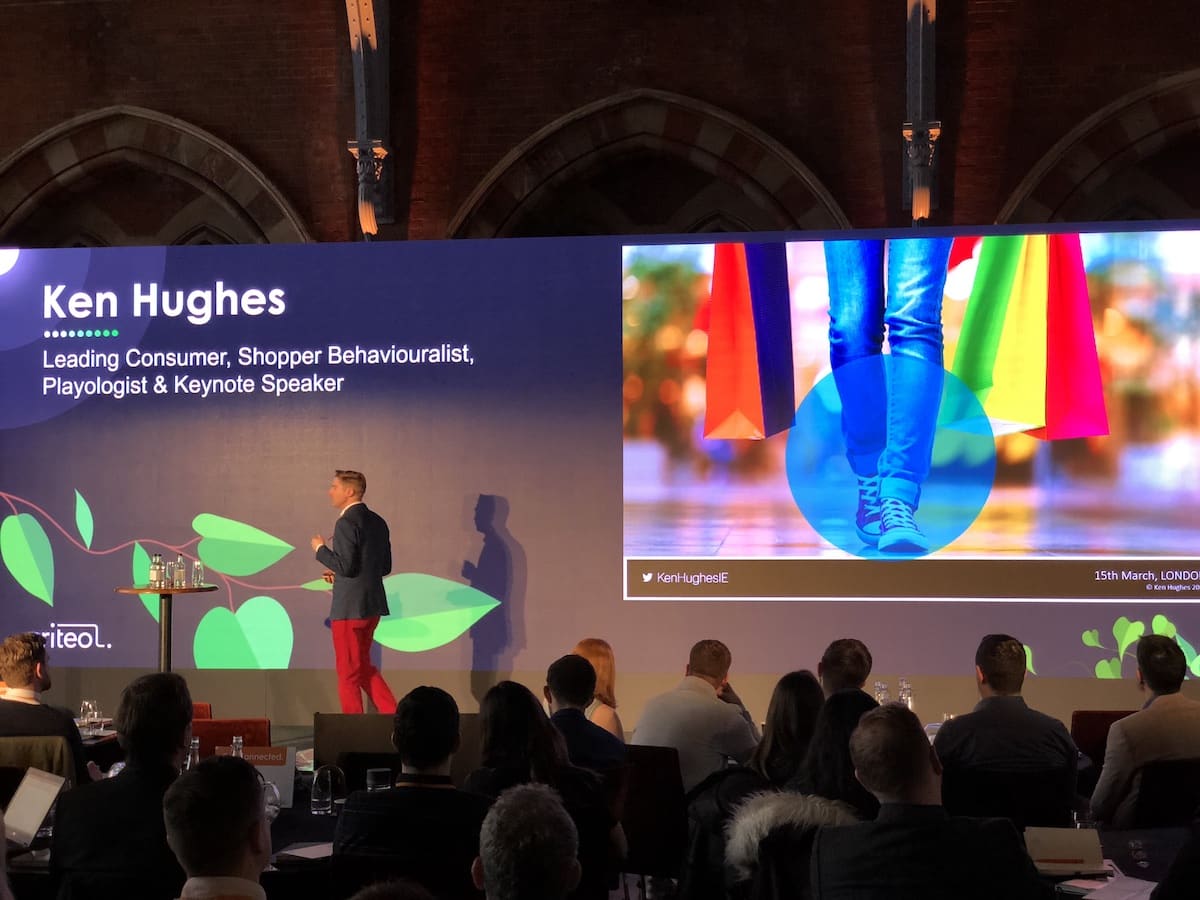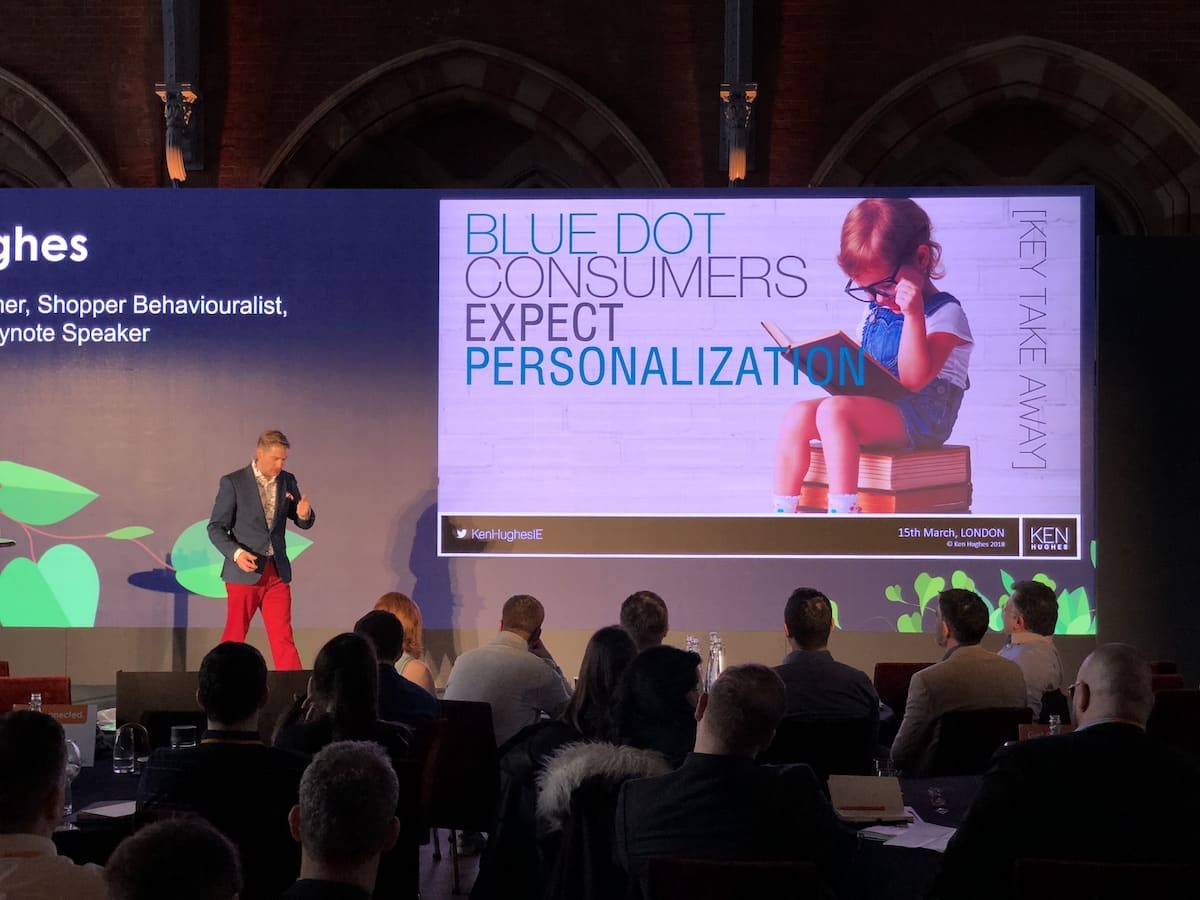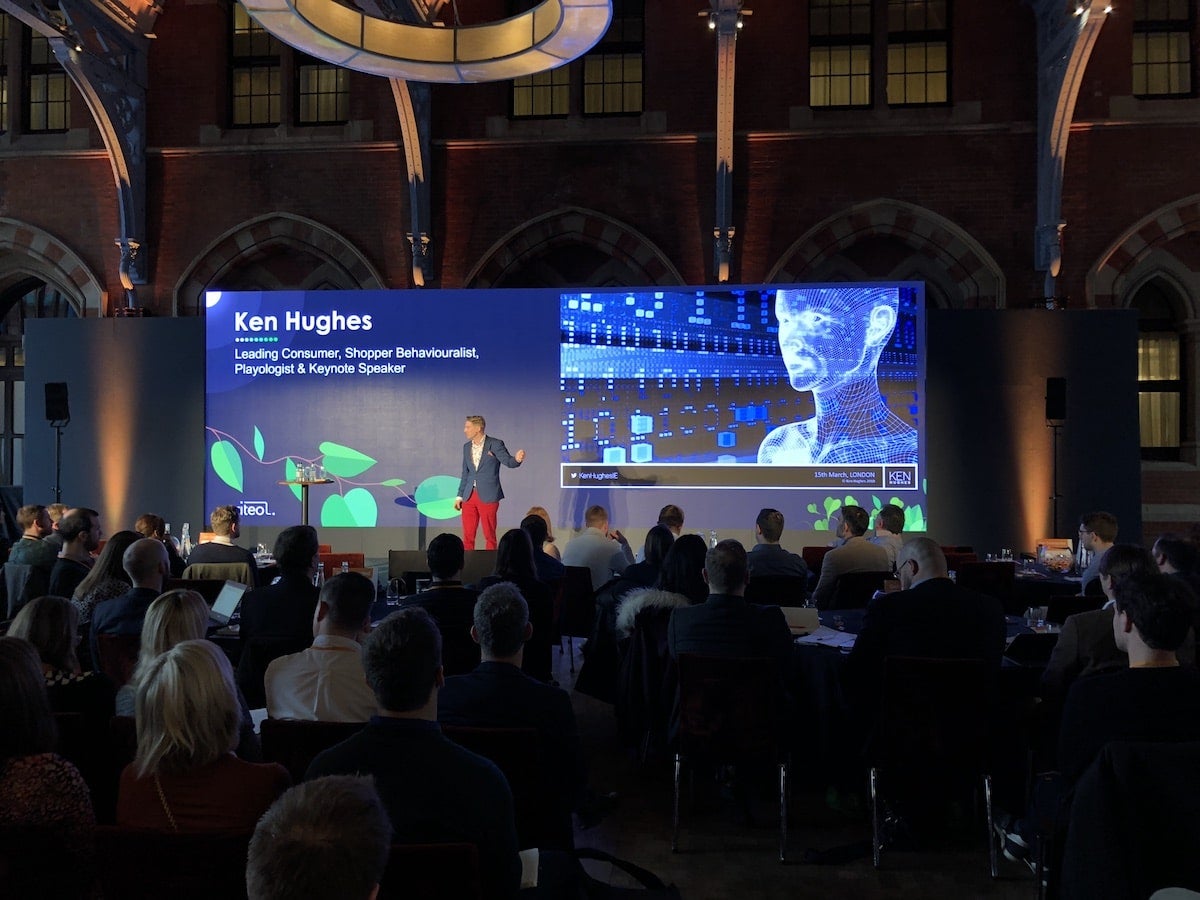We just got back from the Criteo Commerce Marketing Forum in London! Held at the St. Pancras Hotel in posh King’s Cross, it was filled with lots of great content and industry leaders who spoke about the future of retail. Ken Hughes, a leading consumer and shopper behavioralist, joined us for a candid chat about changing shopper expectations, and what brands and retailers can do to win in a new commerce reality.
Ken shared his expertise and predictions in an interview with us.
Q: To start us off, can you tell us a little more about yourself?
Ken Hughes: I’m a consumer and shopper behaviorist, which is a big posh way of saying that I study people, how they behave, how they buy, why they buy and ultimately as brands and products and services, how we can make them buy more.
My job really is to understand the value systems of people’s lives, so I’m a sociologist and anthropologist. And more recently a digital anthropologist, looking at how people live their lives physically and digitally, and then what that means from a value systems point of view — what they want out of brands and businesses, what they want to achieve, and how those brands and businesses then need to change their business models to give the new consumer what they want. That’s what I do.
Here are three things Ken thinks will change retail forever.
1. The demand for “instant”.
Q: What’s the biggest shift in shopper behavior you’ve seen over the last few years?
KH: I think the demand for “instant”, the demand for “it works first time” is probably one of the biggest shifts.
I’ve been watching shoppers for 15 years, watching how they behave, what they expect, and really in the last five years, the simple [shopper] expectant of: it works first time, I get what I want immediately, I’m the most important part of this consumer journey, not you as the product or service. I’m in the middle, I’m the center.
That probably is the biggest shift. And that comes about because for the last 10 years, since that smartphone went into our pocket, it has all become about us. It’s our click, we want this.

2. The blue dot consumer.
KH: Today we have what we call the blue dot consumer.
You open Google Maps and there you are, in the middle. You don’t need to navigate anywhere, you don’t need to know where you’re going or where you are. It shows you where you are, you tell it where you want to go, and you’re placed at the center. From a business metaphor, that’s the change.
“You need to put the person, the shopper, the consumer at the center — not your business, not your brand, not your operation.”
If you look at retail, ultimately retail is an operations business. It’s a business about moving boxes, about bringing people to stores. It’s not consumer-centric. Whereas the later players, the Amazons of this world, that’s the blue dot version — the version where whatever you want we’ll bring it to you.
A lot of the retail clients I work with at the moment are looking at their business models for the next 10 years and saying, “Ok, how can we get more blue dot? How can we actually be what the consumer wants, not what we want?”.
Handing over ownership of your business to the customer is basically what’s happening.
3. Hyper-personalization.
Q: What’s the biggest shopping trend you expect to see take hold in the next few years?
KH: We’re moving into a bit of hyper-personalization. If you’re providing a retail offering that is in any way mass market, then you’re starting to lose traction.
“People want it their way. They want it hyper-personalized to them, and not only that, they want it predictive. They want you to know who they are.”
The challenge is how we can get hyper-personalization and predictive element into our retail offerings at any point in the customer journey where no matter where I am, you know who I am, you know what I’m doing, and most importantly: you know what I want or need next.

The brands that can break that puzzle and understand how they can predict our behavior, and therefore offer products or services at the right time in that customer journey, will win.
We’ve been getting ready for this for the last four or five years. We’re starting to see retailers really get it, starting to collaborate, starting to share data, understanding that they only have a small window of the customer journey and actually, if they collaborate with other people, they get a broader window of the journey and can start to add some serious value to shoppers.
Thanks, Ken. Learn more about the Criteo Commerce Marketing Forum here, and be sure to keep an eye out for our next one, happening May 10th in NYC. Details coming soon!






















